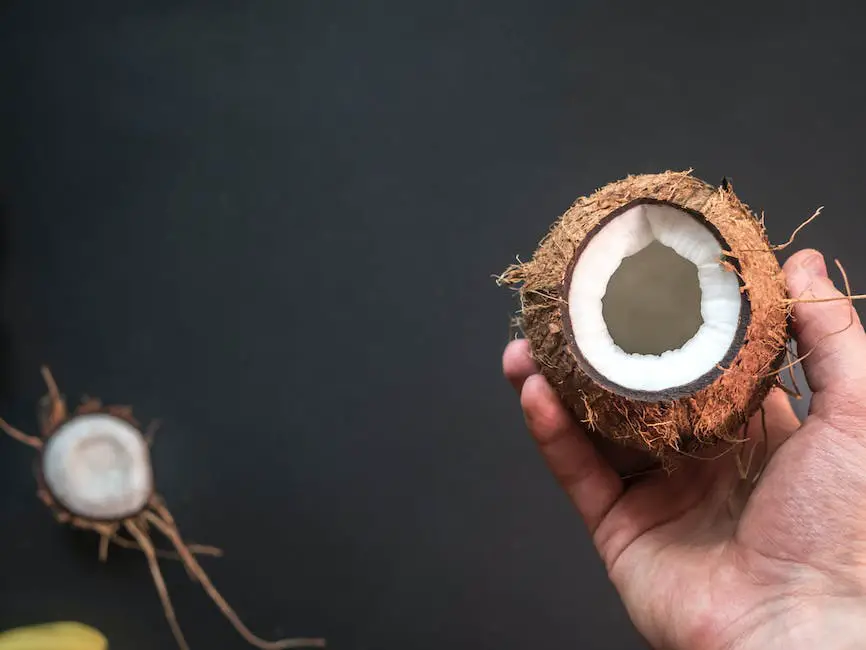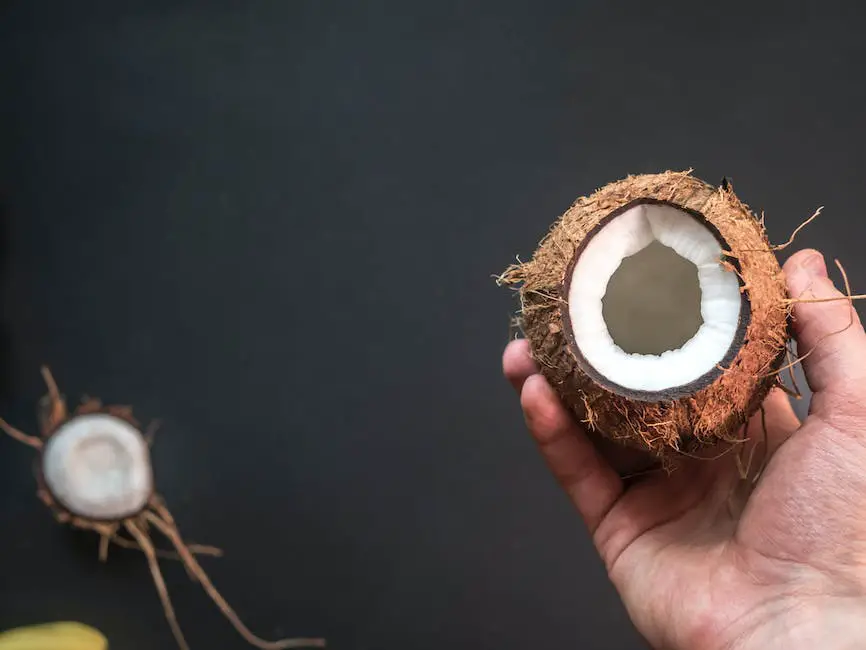Table of Contents
Coconuts, those delightful fruits from tropical regions, provide a refreshing beverage, creamy meaty substance, and are loaded with health benefits. However, for many, the tough exterior of a coconut presents an intimidating challenge. Peeling back the layers and understanding the coconut anatomy can assist significantly in making the opening process simpler and more enjoyable. Arming oneself with the right tools and learning the process not only makes the task less daunting but also all the more rewarding. This discussion will give you insights into the coconut’s basic structure-the husk, the shell, the so-called ‘meat,’ and the water inside, and guide you on how to efficiently and safely conquer the coconut’s tough exterior.
Understanding Coconut Anatomy
Understanding Coconut Anatomy
Diving into the anatomy of a coconut, one will find the outermost layer to be the husk. This part of the coconut is rough and fibrous, and it serves as a natural protector of the inner parts of the coconut. The husk can be green, brown, or somewhere in between, depending on the maturity of the coconut. The layer immediately beneath the husk is the coconut shell. The shell is hard and woody, providing an additional layer of protection for the coconut’s delicacies inside.
Components of a Coconut’s Inner Anatomy
Inside the shell, one finds the main nutritional components of the coconut. The first is the coconut water, a refreshing and healthy beverage. The water is sterile and sweet, rich in essential vitamins and minerals. The quantity and taste of coconut water can vary depending on the coconut’s maturity, with younger coconuts typically having more and sweeter water.
The other significant part of the coconut’s inner anatomy is the coconut meat, also known as the endosperm or kernel. This is the white, soft part that many people are familiar with from desserts and dishes featuring coconut. In mature coconuts, the meat is thick and substantial, whereas in younger coconuts, it can be thin and soft, almost jelly-like.
At one end of the coconut, you’ll find three dark spots, often referred to as the ‘eyes’ of the coconut. These operate functionally as germination pores where a new coconut palm could sprout. They are also the softest area of the coconut shell and can be seen as a key to opening the coconut.
Familiarization Aids in Cracking Open Coconuts
By becoming familiar with the different parts of the coconut – the husk, shell, water, and meat – you’re better equipped to open the coconut. In particular, knowing where the coconut’s ‘eyes’ are located and how to identify them will greatly ease the opening process, as this is the preferable spot to pierce the coconut to drain the water before you proceed with cracking open the shell. This knowledge can assist in making the coconut opening process safer and easier.

Gathering Required Tools
Gathering Necessary Tools
To begin with, it is vital that you have the right tools assembled. It can be a challenge to open a coconut, but with proper equipment, it simplifies the process. Get a sharp knife or, if available, a machete. It should be robust enough to withstand the force of striking without bending or breaking. A dull blade will make the task much harder and potentially dangerous.
Next, you will need a sturdy screwdriver. It does not have to be overly large, but should easily fit into the three small holes—known as eyes—at the top of the coconut. The aim here is to puncture these eyes to drain the coconut water inside before cracking it open.
Lastly, acquire a hammer. This tool will be used to crack the coconut open after the water is drained. It should be hefty enough to crack the shell, but not so heavy that you can’t control it. The size of a standard carpenter’s hammer will usually suffice for this task.
Remember, it is essential to secure these tools before starting the process. Having everything ready at once will make the task more efficient, and prevent you from having to stop midway to find a missing item. Make sure all your tools are clean beforehand, as you don’t want to contaminate the tasty coconut water and meat inside.
Finally, a word of precaution: when using potentially dangerous tools like sharp knives and hammers, always ensure you’re doing so in a safe, controlled manner. Opening a coconut can be exciting, but it’s crucial to prioritize safety throughout the process.

The Process of Opening a Coconut
Identify the ‘Eyes’
Every coconut has three ‘eyes’ – these are small, dark circles that you can find at one end of the coconut. Two of these ‘eyes’ are harder while one is softer. This softer eye is the one that’s easier to penetrate. You can identify which one it is by gently pushing a pointed object into each one; you’ll be able to penetrate the softer one more easily.
Drain the Coconut Water
Once you’ve found the softer eye, use a clean screwdriver, ice pick, or similarly pointed tool to create a hole. Push it through the eye until you reach the internal hollow section of the coconut. Do similarly with the second eye. This will create an air vent which facilitates smoother drainage.
Next, position the coconut over a container or bowl. You can then drain out the coconut water by inverting the coconut. Make sure you save this delicious and nutritious water! You can even refrigerate it for a delightful, tropical beverage later.
Crack Open the Coconut
After draining the coconut, use a hammer or mallet to carefully tap around the coconut’s circumference. Follow a ‘line’ as if the coconut was an equator. Alternate taps between firm and gentle, depending on the resistance you feel. It’s best to do this over a hard surface.
You’ll eventually hear a cracking sound – this signals that the shell has started to break. Continue tapping until the shell splits into two.
Retrieve the Coconut Meat
Once the coconut is open, you can access the white coconut meat inside. If it’s stuck to the shell, you can use a butter knife or a coconut tool to carefully pry it loose. Slide the tool between the shell and the meat, and gently twist until the meat comes off.
Remember, safety is key when doing these steps. Always keep your hands and fingers away from the point of impact when you’re using tools. Even though opening a coconut may seem like work, the delicious, fresh, and fragrant coconut meat you’ll get is all worth it.

Once you grasp the coconut anatomy, arm yourself with the necessary tools, and master the steps, opening a coconut becomes a less daunting task. The valuable knowledge you’ve gathered will not only enable you to reap the fruit’s benefits with ease but also share this delightful skill and the bountiful rewards it brings. Indeed, the shell of the humble coconut may be tough, but with a little knowledge, the right tools, and some practice, you can effortlessly crack it open, revealing the nourishing treasures it holds within.
